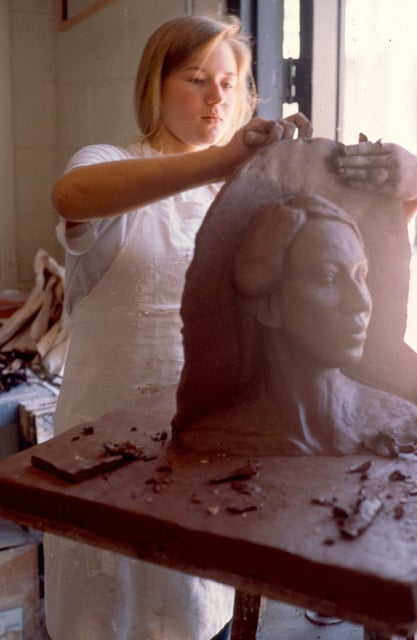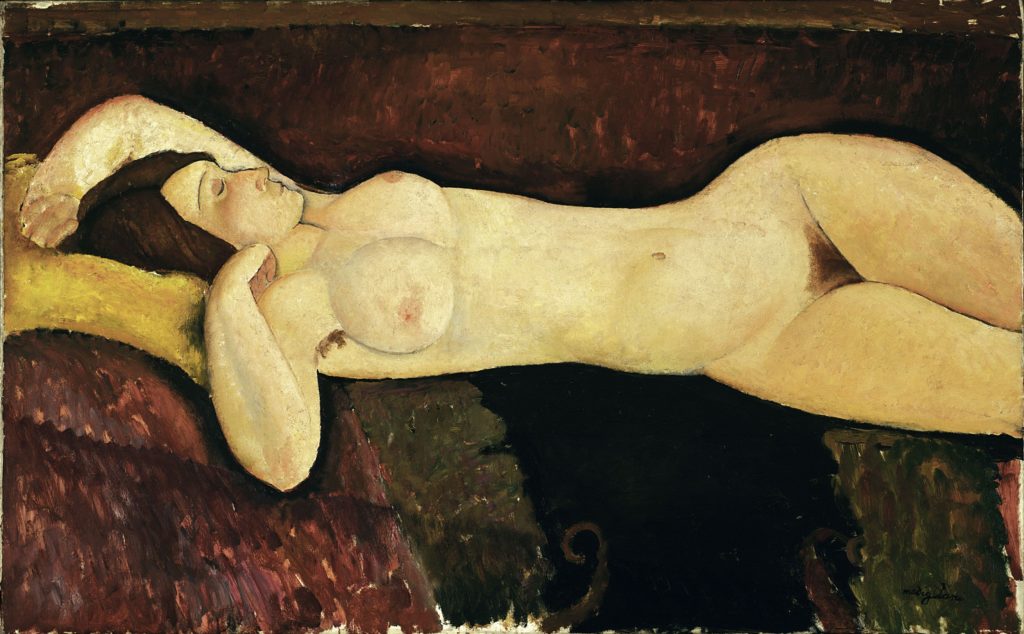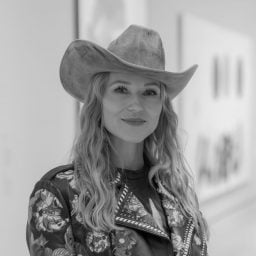People
Art We Love: Grammy-Nominated Star Jewel on Modigliani’s Exalted Reclining Nudes
On the Italian artist's sensual yet sensitive female forms.

Four-time Grammy-nominee Jewel may be best known for her soulful lyrics and chart-topping folk-rock songs, but she has been a visual artist for as long as she has been playing music. For the last 20 years, she has also been a mental health activist, and she recently brought together her activism and art in an immersive museum experience at the Crystal Bridges Museum of American Art in Bentonville, Arkansas.
I can no longer remember the first one I saw, but Amedeo Modigliani’s nudes have always floored me. I recall being so moved because they stood out from all the other nudes I had seen before and had a tremendous amount of humanity and emotionality.
I think I was only about 16 years old when I first encountered one in a picture, while I was a student at Interlochen Arts Academy [in Michigan]. I was primarily a sculptor at the time, working in marble carving and clay. In fact, my first introduction to Modigliani was through his sculptures and I was enamored with their elongated and simplified shapes. I was drawn to the similar sculptural qualities of his paintings and portraits, like the figures’ elongated necks and the simplified forms. But his use of color evoked more of an emotional quality to me that conveyed a strong sense of storytelling… as a burgeoning writer, it absolutely captured my heart.

Jewel in sculpture class at Interlochen Arts Academy, circa 1990. Courtesy of Jewel.
His reclined nudes were some of the first I had seen by a male painter who did not seem to objectify the female form. A chauvinistic spirit was palpable in so many men’s work—a palpable sense of ownership, of lust, but not a sensitivity to the female viewpoint. The women in Modigliani’s paintings are relaxed, and the form seems exalted, as if painted by a man who admired women and who realized they had universes of experience inside their bodies. They are sensual but not sexually staged as objects. To me, it feels like they are in their own power and at such ease.

Amedeo Modigliani, Head of a Woman (1910–11). Photo: National Gallery of Art, Washington, D.C.
I also appreciate the attention to the form of the bellies and the weight of the breasts, which felt realistic as they were posed on their sides and, as every woman knows, don’t defy gravity. Often, painters were obsessed with this pre-pubescent form, even when depicting older women: these tight buds of almost child-like breasts that seemed to sprout from their collarbones. What I saw in Modigliani’s work was variations from form, but great care was also given to the emotionality of the woman. Their eyes, often painted with little to no whites, convey a story behind them, a world of thought that seems to be happening for the subjects.

Amadeo Modigliani, Reclining Nude (1919). Courtesy of the Museum of Modern Art, New York.
I was invited to stay at the home of some newer friends for the first time and was being shown to my room by my hosts when we walked by a small, warm, wood-lined dining room; as I walked by, I thought I noticed a Modigliani nude hanging on the wall. I was gobsmacked! I stopped in my tracks, backed up to peer around the corner of the dining room again, and looked incredulously at my new friends and said, “Excuse my French, but is that a fucking Modigliani hanging above the dining room table?”
They smiled and showed me in proudly. I had never been able to see one in person, so it was my first time getting to see the brushwork up close. Seeing the true color with my own eyes was a peak experience for me. I am amazed the work’s owners are still my friends because I kept stealing away and sitting by myself at the table to be with the work. I ate breakfast alone each morning with her. The warmth and humanity radiating from her filled me.
—Jewel, as told to Margaret Carrigan
Art is more than a thing to hang on your wall. More often, it’s a font for happiness and joy. In “Art We Love,” we ask charismatic individuals from the art world and beyond to tell us about a work of art that they love, one that uplifts or inspires them.





